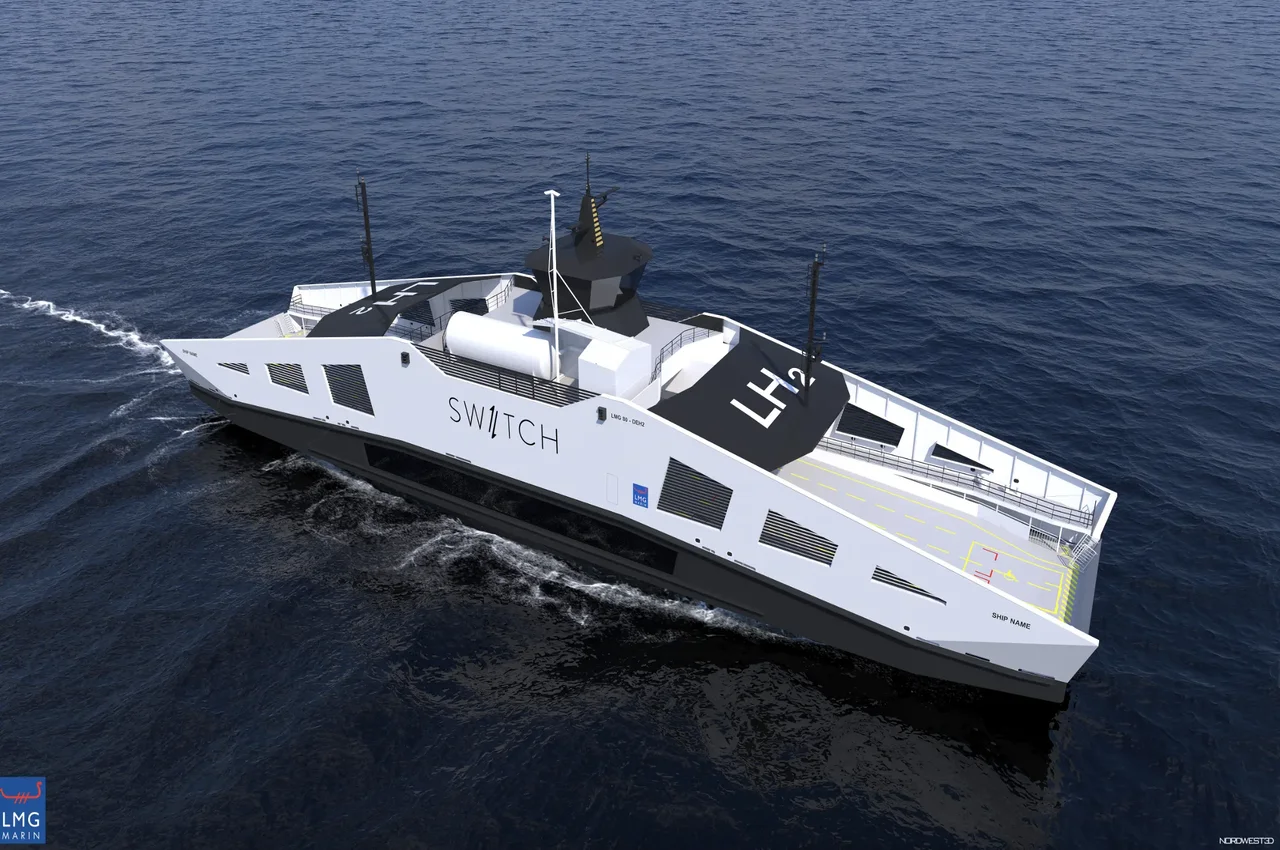
SWITCH Maritime, the US shipowner behind the country’s first hydrogen-powered ferry, is forging ahead with another groundbreaking zero-emission vessel project. In partnership with LH2 Shipping and LMG Marin from Norway, SWITCH is set to begin the US construction of an 80-car, 300-passenger RoPax vehicle ferry, currently operating in Norway on liquid hydrogen (LH2). This ferry is DNVGL-classed and runs on LH2 fuel.
“SWITCH is proud to lead the charge in the US maritime energy transition,” said Pace Ralli, Founder & CEO of SWITCH. “With extensive planning, cutting-edge engineering, and collaboration with key industry partners and the US Coast Guard, we are poised to pioneer zero-carbon LH2 fueling for larger, high-powered workboats.”
SWITCH’s inaugural hydrogen-powered vessel, Sea Change, is a 75-passenger catamaran ferry with 600 kW electric motor propulsion, powered by 360 kW fuel cells and 246 kg of gaseous hydrogen (GH2) stored at 250 bar pressure. It began public service in the San Francisco Bay Ferry system in July 2024, following the issuance of its Certificate of Inspection (COI) from the US Coast Guard in May. Currently, the Sea Change is fueled weekly with mobile compressed GH2 storage trailers, providing enough fuel for three days of operation. In the coming months, when the ferry operates daily, fueling will increase to twice a week.
While SWITCH supports all zero-emission vessel technologies, hydrogen is a key focus due to its ability to meet range and power requirements that other battery-only systems cannot, particularly when space and weight constraints are a concern. Hydrogen’s high energy density allows for greater range and power, and its fueling infrastructure—using truck-to-ship or ship-to-ship refueling—is more flexible than fixed shoreside charging. As vessels grow in size and energy needs, cryogenic LH2 offers an optimal storage solution, enabling faster refueling speeds for large volumes, similar to Liquefied Natural Gas (LNG).
In addition to the Sea Change, SWITCH is developing a 150-passenger, 25-knot catamaran for the SF Bay Ferry service, utilizing the same GH2 storage and fuel cell system (to be unveiled in Q1 2025). For larger zero-emission harborcraft, such as 300+ passenger ferries and harbor tugs, SWITCH plans to transition to cryogenic liquid hydrogen.
“Our first hydrogen vessel resulted from years of collaboration with the US Coast Guard, proving hydrogen fueling’s viability and safety,” said Pace Ralli. “Though the LH2 RoPax ferry design is DNVGL-classed, we still have work to do to meet US Coast Guard regulations. Fortunately, LH2 fueling will follow the same IGF Code as LNG fueling in the US, providing a clear regulatory path.”
The vehicle ferry’s steel hull offers more space and weight flexibility compared to aluminum catamaran designs, making it ideal for introducing LH2 fueling in the US. The vessel’s LH2 fuel will be vaporized onboard and used in PEM fuel cells to generate electricity for the motors, with the only emissions being pure water vapor—no carbon or diesel-related pollutants.
With a service speed of 14 knots, the RoPax ferry will require fueling once a week, with 3000 kg of LH2 delivered from a truck. Unlike other vessels, it will not need shoreside charging infrastructure. Its Norwegian counterpart, the MF Hydra, operates a triangular six-nautical-mile route, requiring refueling only once every two weeks. The MF Hydra has been successfully refueled with LH2 about 50 times since its hydrogen-powered operation began in March 2023, with no service interruptions except for planned maintenance.

